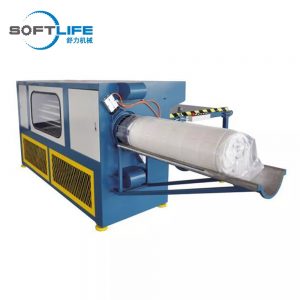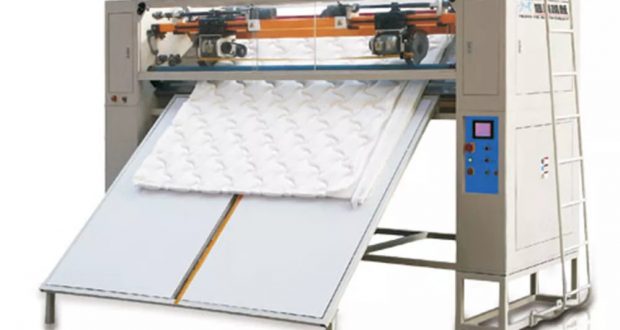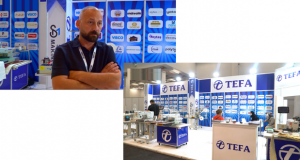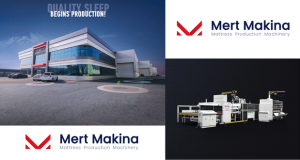Every night, millions of people around the world lay down on their mattresses for a peaceful night’s sleep, and most are blissfully unaware of the intricate processes that go into manufacturing these cozy sleep companions. The mattress industry has seen remarkable advancements in technology and automation, largely thanks to the introduction of mattress machinery, including the fascinating innovation of mattress wrapping machines. In this article, we’ll delve into the world of mattress machinery, uncover the key players in the mattress manufacturing process, and explore the impact of mattress wrapping machines on the industry.
down on their mattresses for a peaceful night’s sleep, and most are blissfully unaware of the intricate processes that go into manufacturing these cozy sleep companions. The mattress industry has seen remarkable advancements in technology and automation, largely thanks to the introduction of mattress machinery, including the fascinating innovation of mattress wrapping machines. In this article, we’ll delve into the world of mattress machinery, uncover the key players in the mattress manufacturing process, and explore the impact of mattress wrapping machines on the industry.
The Mattress Machinery Revolution
The traditional art of mattress-making has come a long way, evolving from the manual craftsmanship of yesteryears to a highly automated and efficient industry. Mattress machinery plays a central role in this transformation, allowing manufacturers to produce a wide range of mattresses efficiently and at scale.
Key Players in Mattress Manufacturing
Mattress Spring Machines: The foundation of many mattresses is the spring system, and specialized machinery is used to produce these springs. Spring coilers, for instance, automate the coiling of spring wire into the desired shape, while spring assemblers put together the spring systems that form the core of innerspring mattresses.
Quilting Machines: Quilting machines create the intricate patterns on mattress covers, adding not only an aesthetic touch but also enhancing comfort. These machines can precisely stitch various materials together, ensuring uniform distribution of padding.
Foam Cutting and Shaping Machines: For foam-based mattresses, foam cutting and shaping machines are essential. They accurately cut foam into the required sizes and shapes to create the layers of cushioning in the mattress.
Gluing and Laminating Machines: These machines bond different layers of materials together, such as foam, fabric, and adhesives, to create the various components of the mattress. They ensure that all layers are securely fastened and provide a consistent level of support.
Mattress Wrapping Machines: A relatively recent innovation, mattress wrapping machines are integral to the final stages of mattress production. These machines efficiently package the mattress in a protective cover, ensuring it arrives in pristine condition to the customer.
The Rise of Mattress Wrapping Machines
In recent years, mattress wrapping machines have gained prominence in the industry, offering an array of benefits to manufacturers and consumers alike:
Efficiency and Productivity: Mattress wrapping machines significantly reduce the time and labor required to package mattresses. This efficiency translates into higher production rates, meeting the demand for quality mattresses in a timely manner.
Cost-Effectiveness: Automating the wrapping process minimizes the cost of manual labor, saving manufacturers money. This cost-effectiveness can lead to competitive pricing for consumers.
Consistency and Quality: Mattress wrapping machines ensure that each mattress is consistently and neatly wrapped, eliminating variations that can occur with manual methods. This uniformity reflects positively on the quality of the product.
Hygiene and Protection: The protective covering applied by these machines keeps the mattress clean and free from contamination during transportation and storage. This is particularly valuable for online mattress retailers who ship mattresses to customers.
Environmental Benefits: Many mattress wrapping machine use eco-friendly materials for packaging, reducing the environmental footprint of the manufacturing process.
How Mattress Wrapping Machines Work
Mattress wrapping machines are designed to streamline the process of packaging mattresses. The following steps outline their operation:
Positioning the Mattress: The mattress is positioned at the entry point of the wrapping machine, typically on a conveyor system. The machine can accommodate various mattress sizes and types.
Wrapping Material Feed: The wrapping material, usually a stretchable plastic film or a plastic bag, is pulled from a roll or dispenser. The material is designed to conform to the shape and size of the mattress.
Sealing and Wrapping: The machine uses heat or adhesive to seal the wrapping material at the start of the mattress. It then wraps the material tightly around the mattress, ensuring that it’s securely enclosed. The excess material is trimmed or sealed at the end of the process.
Quality Control: Some machines incorporate quality control features, such as sensors and scanners, to detect irregularities in the wrapping process. This ensures that the final product meets the desired standards.
Product Discharge: Once the wrapping is complete, the mattress is discharged from the machine, ready for storage, transport, or delivery.
Conclusion
The role of mattress machinery in the modern mattress manufacturing industry cannot be understated. These highly specialized machines have revolutionized the process, enabling manufacturers to produce mattresses more efficiently and at a consistent level of quality. Among these innovations, mattress wrapping machines are the unsung heroes that ensure mattresses are delivered to consumers in impeccable condition. As the industry continues to evolve and adapt to changing consumer demands, the integration of cutting-edge machinery like mattress wrapping machines will remain a vital component of the ever-evolving world of comfort and sleep mattress machine.
 SleepTech Magazine Mattress, Accessories, Machinery, Raw Materials
SleepTech Magazine Mattress, Accessories, Machinery, Raw Materials



